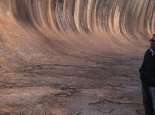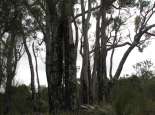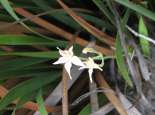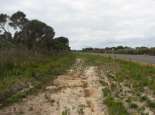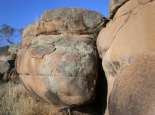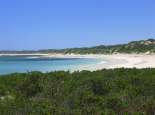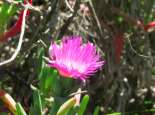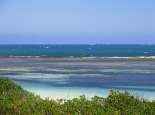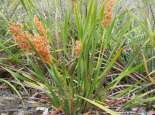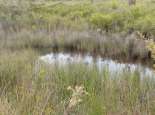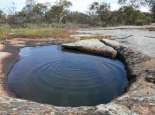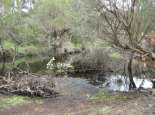Connection to Country
For thousands of years Noongar people have resided on and had cultural connection to the booja – land. Everything in our vast landscape has meaning and purpose. We speak our own language and have our own lore and customs. The lore is characterised by a strong spiritual connection to country. This means caring for the natural environment and for places of significance. Our lore relates to ceremonies, and to rituals for hunting and gathering when food is abundant and in season. Connection to booja is passed on through our stories, art, song and dance. Noongar people not only survived European colonisation but we thrived as family groups and sought to assert our rights to our booja. For Noongar people, the south-west of Western Australia is ngulla booja – our country.
Boodjar, that is the dirt.
Boodjar wam, that is somebody come from another country.
Barl yaarl koorliny ngulla boodjar nyininy. That means he come and sit on our (Nyungar) ground.
Got nothing boodjar, Uart, boodjar, uart, yeye ngulla.
None, land, none today us,
Wedjela wort dombariny.
See that means the white took over
Noongar Elder Tom Bennell in Collard, Harben and van den Berg,
‘Nidja Beeliar Boodjar Noonookurt Nyininy’ website, 2004
White fella got it but it’s still in my heart, this is my country.
Noongar Elder Angus Wallam, oral history, SWALSC, 2005
Land, while not owned by Noongar people in a legal sense, remains as much the Noongar country it was before Europeans or wedjelas claimed the land nearly 180 years ago’.[i]
Ngulla boodjar they call this (our land) ngulla boodjar, (our land).
Noongar Elder Tom Bennell in Collard, Harben and van den Berg,
‘Nidja Beeliar Boodjar Noonookurt Nyininy’ website, 2004
Noongar people are the traditional owners of the south-west of Western Australia and have been for over 45,000 years. We have a deep knowledge and respect for our country, which has been passed down by our Elders.
Noongar boodja (country) extends from north of Jurien Bay, inland to north of Moora and down to the southern coast between Bremer Bay and east of Esperance. It is defined by 14 different areas with varied geography and 14 dialectal groups.
Noongar people have a profound physical and spiritual connection to country. It relates to our beliefs and customs regarding creation, life and death, and spirits of the earth. Spiritual connection to country guides the way we understand, navigate and use the land. It also influences our cultural practices.
Being Noongar is to be part of a family and community, which determines our relationship to country. The relationship to country empowers our identity as a Noongar person.
It doesn’t matter where you go, you know where you come from. You might go out of your country, but you know where your home is. Where you were born is where you will be buried.
Glen Colbung, oral history, SWALSC, 2008
Last night I went to sleep in my homeland. My home, my home, my great, great miya-miya home.
Gus Ryder, oral history, SWALSC, 2008
A lot of Noongar people who lived in the southwest gave birth to their children in the bush under a tree or in their dwellings. The birth was attended by experienced Noongar women within the family and more often than not by the grandmothers. Doreen Jetta tells us their family stories about birthing.
Family and Country
As Noongar people, we come to know our connection to country through our moort (family). This means we can identify our country – the place where we feel at home, where we can move about freely without having to obtain anyone’s permission. Mr Denis Jetta talks about his grandmothers campsite and family relationships.
Noongar Lore
Noongar lore and custom guide the ways in which we define our country and our rights to it. Lore influences how we connect with and care for the land. As Noongar people we have a duty to speak for our country, to acknowledge its value to our communities and to observe lore that governs who may or may not ‘speak for country’.
Noongar Land Ownership
Traditional Noongar rights and interests in boodja (country) are not the same as the Western concept of land ownership. For Noongar people, to have connection to country is to have a responsibility to the land. Duties and responsibilities for country also include protecting sites of spiritual significance and family heritage.
Different Noongar groups have custodial status over certain parts of the south-west. Within these areas are moort boodja or family runs. These are the areas in which Noongar family groups traditionally travel and enjoy special privileges relating to that part of our country. We consider it our traditional land owner’s right to have use and access to these areas. Those who do not share rights in that part of the land should seek permission before they enter or use it.
Traditional Noongar lore and custom does not dictate that custodians remain permanently within their territorial borders to be on country. Traditionally, Noongar people travelled widely and we accepted that our territories would be occupied by others during our absence.[ii]
Kaartdijin
Our kaartdijin (knowledge) and understanding of Noongar boodja (country) reflects our deep spiritual and physical connection to country and to places of significance. For each Noongar group, there is a place of significance where we go to celebrate or pay tribute to those who have passed on.
Joe Northover – Minningup pool
Joe Northover talks about Minningup Pool on the Collie River
Audio Transcript
We come here to this place here, Minningup, the Collie River, to share the story of this area or what makes it so special. It is the resting place of the Ngangungudditj walgu, the hairy faced snake. Baalap ngany noyt is our spirit and this is where he rests. You have big bearded full moon at night time you can see him, his spirit there, his beard resting in the water. And we come to this place here today to show respect to him plus also to meet our people because when they pass away this is where we come to talk to them. Not to the cemetery where they are buried but here because their spirits are in this water. This is where all our spirits will end up here. Karla koorliny we call it. Coming home. Ngany kurt, ngany karla – our heart, our home. This, our Beeliargu, is the river people. So that’s why we always come to this Minningup. It’s very important.
This is the important part of the river, of the whole Collie River and the Preston River and the Brunswick River, because he created all them rivers and all the waters but here is the most important because this is where he rest. So whenever we come back now – my cousin died the other day so we come back here, bring his spirit home because this is where he belong here. They will bury him with his mother and you sing out to him. Ngany moort koorliny. Ngany waanginy, dadjinin waanginy kaartdijin djurip. And we come and look there and talk to you old fellow. Your people have come back. Ngany waangkaniny. I talk now. Balap kaartdijin. Listen, listen. Palanni waangkaniny. Ngany moort koorliny noonook. Ngany moort wanjanin. Your people come to rest with you now. Listen old fellow, listen for ’em, bring them home. Karla koorliny. Bring them home and then you sing to them. (Singing in language) And then chuck sand to land in the water so he can smell you. That’s our rules. Beeliargu moort. That’s the river people. That’s why this place important.
Caring for Country
Noongar people have a cultural responsibility to have a relationship with the booja – land. By respecting the land, caring for it and protecting it through traditional sustainable practices, we continue to demonstrate our strong connection to country.
Unless we have relationship with the land, with country, with budjar, it is very hard to love it and protect it.
Elders Council: National Conference of the Australian Association for Environmental Education (Bunbury)
Kayang (Hazel) Brown talks about the conservation of mallee fowl eggs:
And every about a week or two, just there put the horse in the cart and off to Qualup or down to Bremer or down to Dillon Bay or even down to Marianup; have three or four days, fishing and lazing around and go looking for goanna eggs or mallee eggs; we knew what to eat, you know, the bush tucker and things like that. We often went hunting for mallee hen nests and if there were eggs in the nest we would always leave one or two for the mothers to look after.
Kayang (Hazel) Brown, oral history, SWALSC, 2008
Noongar people have always used our knowledge of the six seasons in the south-west of Western Australia to hunt, fish, and gather only the most ripe and abundant food sources for our needs.
The rituals and ceremonies performed by Noongar people over many thousands of years reflect our sustainable use of the environment and reinforce our connection to country. These rituals include domestic and social customs that observe Noongar lore governing the use of land and resources. An important and significant part of Noongar culture is the teaching of sustainable environmental practices, handed down by our Elders.
Patrick Hume talks about sustainable use of country:
We never catch marron when the creek didn’t run, or the river didn’t run. Always catch marron when the water runs. That’s our culture. You gotta give ’em a chance to breed.
And if you got anything with eggs on ’em, you threw ’em back….We never had nets, yeah, we coulda made nets but we didn’t believe that, you know, you rape the country. So you gotta leave some for the breeding.
Partick Hume, oral history, SWALSC, 2008
For Noongar people there is a duty to pass on kaartdijin and the connection to country to the next generation, expressed here by Kayang (Hazel) Brown and Bruce Jetta:
We were always taught by the Elders, you know, by the Elders. If you wanted to know anything, mother and father had no time to tell you, you had to go, oh, the Elders of our tribe used to have to tell you, the Elders of our group.
Kayang (Hazel) Brown, oral history, SWALSC, 2008
Mr Bruce Jetta talks about his memories of country. Permission to use this audio recording kindly granted by Mr Bruce Jetta.
References
[i] Host, J and C. Owen, It’s Still in my Heart, This is my Country, The Single Noongar Claim, UWA Publishing, 2007, p.vii
[ii] Host, J and C. Owen, It’s Still in my Heart, This is my Country, The Single Noongar Claim, UWA Publishing, 2007, p.124
